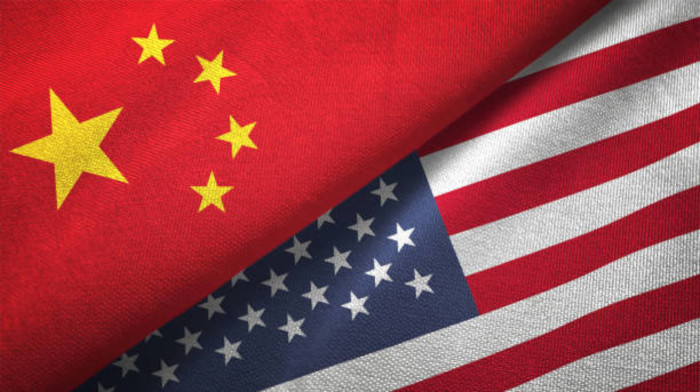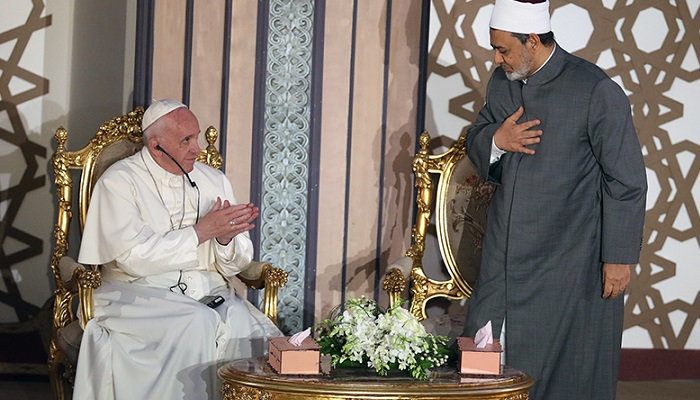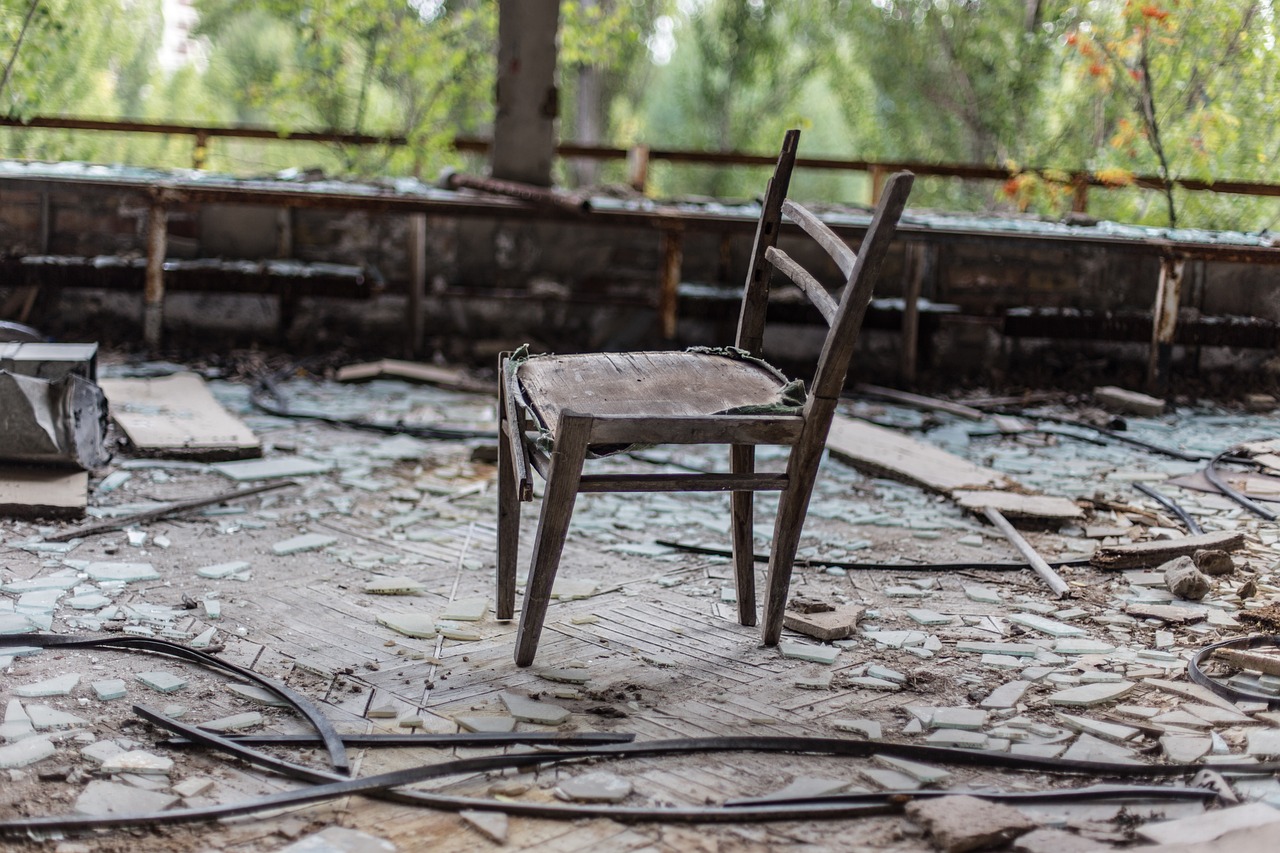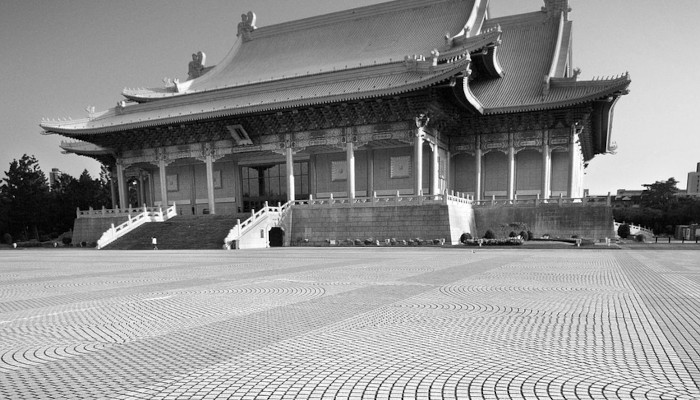
Editor: We cannot ignore that the US is now preparing for war.
(we republish the interesting essay by Zheng Yongnian translated by David Kelly https://policycn.com/)
To maintain its hegemony, it is making deployments in the Indo-Pacific region, actively shaping China’s surrounding environment, and intends to contain the PRC’s rise. But does that mean war will definitely happen? Is there still hope for peace?
Professor Zheng states that the China/US game is no simple one between two states, but a complex one involving multiple states. It must involve three major elements: major powers’ will, capability and diplomatic methods. The article analyses the three elements of the PRC and US, arguing that while the US has the will, it lacks sufficient capability or diplomatic conditions to engage in alliances and wars; meanwhile, the PRC’s peaceful will, peacekeeping capability, and inclusive multilateral diplomacy plant hopes for world peace.
President Xi made a six-day visit to Europe 5–10th May. At a time when the international order is in chaos and ‘leaderless’, China shoulders the responsibilities of a major power and brings the vision of peace and development to Europe, which is deeply involved in the Russia-Ukraine conflict. While the US practises exclusive multilateralism and engages in ‘gangs’, China practises inclusive and open multilateralism. To a large extent, this inclusive multilateralism is reshaping the world order.
The probability of war is not small, but hope for peace remains. The PRC can neither be blasé about war nor abandon efforts for peace.
Zheng: 01 ‘Collapse of the rites and music’ in the international order
The world order has in modern times been both shaped and fragmented by major powers. The UN-centred postwar international order is today rapidly disintegrating. While still superficially existent, this order seems unrelated to global politics. In both the Russia-Ukraine war and the Israel-Palestine conflict, the UN seems just a ‘spectator’.
Of the five permanent members of the UNSC, four are already engaged in war, but the degree of involvement is different.
Russia is in Ukraine still fighting a war that has from the beginning been a US–Western proxy war. Russia launched it because US kept up NATO expansion, directly threatening its national security. Nor is it hard to grasp that while it’s expressed directly as between Russia and Ukraine, it is indirectly deemed a contest between Russia and NATO. Hence the US-led NATO was consciously involved and took part in the war from the beginning. As it progressed, NATO countries became ever more involved.
The UK claims to be the US’s most important ally in Europe. It made the simplest choice from the outset: to side with the US without reservation.
On the one hand, France tried to adhere to a relatively independent foreign policy, but on the other hand, it was deeply involved in the war. If we want to differentiate France from the US, it can only be at an abstract level, i.e. France fights for Europe. Clear as to US self-interest in the war it knows Europe cannot rely on the US, but must protect itself.
The US is waging a proxy war in Europe. From the very beginning, the US goal was, as it proclaimed, to completely defeat or drag Russia down so that it would no longer be able to ‘do evil.’ Except for not sending out troops to directly take part in the war, the US did everything it could. The US funds Ukraine more than all other states combined. It also provides advanced weapons to help Ukraine fight cognitive wars around the world. Yet something distinguishing the US from other NATO states is that it is far from Europe. The war’s direct victims are European states like France and Germany.
The war’s complexity means it neither ended as quickly as Russia expected, nor was Russia completely defeated as NATO expected. A big country, Russia will not be easily defeated; nor does the US not want to devote all its energy to it: while it is conducting this proxy war, it is also preparing for another one: a ‘war’ with the PRC. war’. The result is today’s state of continuous ‘war.’
US Treasury Secretary Yellen visited the PRC recently, accusing it of ‘overcapacity’, harming the world economy.
Secretary of State Blinken then visited, accusing the PRC of helping Russia and asking it to stop trade that helps it fight wars.
The US is clearly trying to shift responsibility to China for its failure to defeat Russia, despite the US itself and its allies never ceasing to do business with Russia.
The PRC has trouble understanding that on the one hand, the US makes ready for war with China in the Indo-Pacific, yet meanwhile hopes that China and Russia will have no trade relations – so that the US-led NATO can defeat it faster Russia allows the US to free up its hands to deal with China wholeheartedly as soon as possible. What’s the logic here? Only Americans can straighten it out!
02 Western civilisation’s logic of ‘binary opposition’
What the US embodies is Western civilisation’s typical ‘angel or devil’ ‘binary opposition’ world view. This dividends countries into ‘friends’ and ‘enemies,’ or ‘either with, or against me’ camps. Hence even if there is no ‘enemy’, one must be created. After the Soviet Union broke up, the US first gradually ‘moulded’ China into an ‘enemy’, then deemed it a real one. This was the context in which its Indo-Pacific strategy emerged. For the US, the strategy’s goal was either a ‘cold war’ to contain China as it had contained the Soviet Union; or a ‘hot war’ to completely defeat it in war.
Cold or hot, the probability of war is indeed not small.
First is US perceptions, in which there are endless doctrines propound the inevitability of war. Western IR’s two mainstream schools, realism and liberalism, are indeed all about war. The former focuses on studying how war occurs, while the latter focuses on studying how war does not occur.
Realist IR scholars, such as University of Chicago’s John Mearsheimer, have long alerted us that PRC economic development and modernisation are actually unnecessary: with China’s rise, it will inevitably be at war with the US. This is not to say that Mearsheimer advocates war: Westerners typically argue for its inevitability between established states and rising powers. This is seen in Graham Allison’s ‘Thucydides Trap’, a theory whose core is that ‘one mountain cannot hold two tigers’. Major powers can’t coexist but must have showdowns. Allison’s research team found evidence from the history of IR, saying that there have been 16 transfers of power since 1500. Peaceful transfers of power were from established to emerging powers only 4 times; the process of transfer was warlike in the remaining 12 times.
Appearing to be advocates of peace, liberals are often the cause of war. Starting from Kant’s ‘doctrine of eternal peace’, the liberal school notes that wars in modern times often occur between democratic and non-democratic regimes, or groups of regimes. Liberalism hence concludes that to achieve peace, we must transform non-democratic into democratic regimes. Peace is what liberalism pursues, and peace is of supreme value, so liberalism easily justifies war. That is, war to overthrow non-democratic regimes is moral and just. This is indeed true in practice. The US overthrows non-democratic regimes via such means as colour revolutions, proxy wars, direct military intervention, and indeed war. After the Cold War, the UK and the US put forward the concept of ‘human rights above sovereignty’, directly violating other sovereign countries.
Theory reflects practice. In reality, serious thinking people never write off the probability of war. During the Cold War, the US and the Soviet Union maintained the Cold Peace for half a century via the ‘nuclear deterrent’ of mutually assured destruction. But Cold War meant only that there was no direct military conflict between the two major powers; proxy wars never stopped. The end of the Cold War marked the end of the Cold Peace. The US became an unrestricted super hegemonic power, able to single-handedly determine war and peace in the world. From the war in the former Yugoslavia, the war in the Middle East to the proxy war in Ukraine caused by NATO’s eastward expansion, all were related to the US. Now, after the US defines the PRC as the only country capable and willing to challenge the US on a global scale, it has shifted its strategic focus to the Indo-Pacific.
03 Indo-Pacific deployment and containment of China
Published by the NYT on 29 April, ‘A New Pacific Arsenal to Counter China’ showed off US military capabilities in the Asia-Pacific. Since taking office, it said, President Biden has begun to enact a strategy to expand the use of US military bases in Asia-Pacific allied states, deploying a series of new weapons systems. Biden added the US military would defend Taiwan from PRC invasion. Ely Ratner, assistant secretary of defence for Indo-Pacific security affairs, said: ‘We drove the most transformative US military posture in the Indo-Pacific region in a generation in 2023.’
The article went on to list a series of actions by the US:
Biden signed a $95 billion supplemental military aid and spending bill passed by Congress, including $8.1 billion to counter China in the region.
the greatest change in US strategy was to disperse the US military through the region with smaller, more mobile forces, rather than concentrate them in vast Northeast Asian bases. Primarily an effort to counter Beijing’s efforts to build forces able to target aircraft carriers or military outposts in Okinawa and Guam, these land forces, including the US Marine Corps Littoral Combat Regiment retrained and re-equipped in Okinawa, will now have the capability to attack warships at sea.
For the first time, the Japanese military will receive up to 400 Tomahawk cruise missiles. The latest Tomahawk cruise missiles can attack sea ships and land targets from more than 1,850 km away.
The Pentagon has also secured access to four additional bases in the Philippines that could eventually become home to US warplanes and advanced mobile missile launchers if Washington and Manila agree to deploy offensive weapons there.
The US continues to send weapons and Army Special Forces trainers to Taiwan because de facto independent Taiwan is the biggest flashpoint in the US-China conflict.
The Intermediate-Range Missile Treaty, a Cold War US–Soviet Union arms control agreement, banned land-based cruise or ballistic missiles with a range of 500 to 5,500 km. But after the Trump administration withdrew from it, the US was able to develop and deploy many small mobile launchers across Asia for previously banned missile types.
For the US military, the new deterrence effort consists of two parts: one is to increase maritime patrol activities, and the other is to enhance the capabilities of land forces.
As for the first part, the Pentagon has announced that US Navy warships will participate in more joint exercises, such as with Japanese Navy warships in the western Ryukyu Islands near Taiwan and with Philippine warships in the South China Sea.
In terms of the second component, Marine Corps and Army units already stationed in the Pacific have recently fielded medium- and long-range missiles paired with small mobile trucks that were banned under previous treaties.
These can be quickly moved to new locations using Osprey tilt-rotor helicopters or large cargo planes, and can drive off at any time to avoid PRC counterattacks. A new small fleet sent by the US Army to the region can also be used to redeploy troops and launchers from island to island.
The Pentagon announced a new agreement with Manila in February 2023 to share military bases, allowing the US military to use four of their bases for humanitarian missions. The Philippines opened five bases to the Pentagon in 2014. Most were air force bases with runways long enough for heavy cargo planes to take off and land.
If the Philippines finally agrees to deploy US combat troops and mobile missile systems at these bases, their strategic value will be visible on the map once the US is asked to defend its oldest treaty ally in the Asia-Pacific region.
Missile-launching trucks deployed at a base on the northern tip of Luzon island are capable of striking Chinese ships crossing the strait between the Philippines and Taiwan. Another base about 1,100 to the southwest will allow the US military to strike bases built by China in the nearby Spratly Islands (Spratly Islands).
The US has pledged $100 million in ‘infrastructure investment’ for these nine bases in 2023, with more funding expected in 2024.
The Pentagon has forged closer military ties with Australia and Papua New Guinea, expanding US defences against possible attempts by Chinese forces to establish dominance on the ‘second island chain.’
The Obama administration has moved several Littoral Combat Ships to Singapore and deployed a rotational force of Marines to Darwin on Australia’s north coast, providing more military resources for the Pentagon to respond to the needs of the Asia-Pacific region.
In 2023, the Biden administration significantly increased its commitment to Australia, one of the US’ most important non-NATO allies.
Australia, the UK and the US have signed ‘AUKUS’, a new multi-billion dollar deal, permanently transferring several of the US Navy’s newest Virginia-class attack submarines to Canberra. While the new base location for the submarines has yet to be announced, the first Australian sailors to work on the submarines completed nuclear-powered training in the US in January 2024.
These stealth submarines, capable of firing torpedoes and Tomahawk missiles, raise the threat Beijing faces in the event of a regional war.
Papua New Guinea, located north of Australia, reached an agreement with the US in August 2023, allowing the US military to use more local resources when performing humanitarian missions, and committed to using US taxpayers’ money to update local military facilities. ‘
The NYT article did not detail the ‘alliances’ the US has built in the Indo-Pacific to contain China or even go to war with it. These ‘allies’ are in fact far more important to war than weapons. The US has iIn recent years built ever more ‘minilaterals’ around the first (Taiwan) and second island chain (South China Sea): what are called tuantuan-huohuo ‘gangs’.
So far, the US has established at least seven ‘minilaterals’ in the Indo-Pacific region:
1. Trilateral Alliance of the US, Japan and the Philippines;
2. Trilateral Alliance of the US, Japan and South Korea (JAROKUS);
3. Trilateral Alliance of the US, Britain and Australia (AUKUS);
4. Quadrilateral Security Dialogue (QUAD): US, Japan, India and Australia;
5. Five Eyes Alliance (US, UK, Australia, Canada and New Zealand);
6. US-Japan-Vietnam trilateral alliance (still in the brewing stage);
7. US-Vietnam-India trilateral alliance.
Most have already taken shape; some, e.g. the US-Vietnam-India trilateral alliance, are still in the brewing stage. It is not ruled out that more ‘mini-multilaterals’ will appear in the future.
04 Possibility of war:
Will, capability and diplomatic methods
n response to the objectives of these ‘alliances,’ Deputy Secretary of State Kurt Campbell said in 2023, ‘We have deepened our alliances and partnerships overseas in ways that were unimaginable a few years ago.’ A US admiral said, ‘My confirmation is that the US is playing a stronger hand with our allies and partners, and we will win in any battle that occurs in the Western Pacific.’.
According to the bilateral joint defence agreement signed between the US and its allies in the Indo Pacific region, if a country’s assets are attacked, other countries will respond.
The US is preparing for war.
The PRC wouldn’t be so naive, of course, as to think war can’t happen, that peace will naturally come. As many observers see, if the US is openly preparing for war, then the PRC is quietly preparing how to deal with various possible wars. With economic development, its all-round military modernisation speeds up. While PRC military spending is overall only a third that of the US, what the US wants to maintain is global hegemony; PRC strategy is only to protect the country. Above all in the Asia Pacific, PRC weapons have in all aspects surpassed those of the US in terms of quantity and quality.
If both the PRC and US are preparing for war, is there any hope for peace?
The probability of war is high, but this does not mean war is necessary, let alone that it has become inevitable. Hope for peace remains.
In Sino/US relations terms, both war or peace involve the two major powers’ three major factors: will, capability, and diplomatic methods.
US hardliners strongly fiercely desire to contain, indeed defeat the PRC. No country in this world would in fact underestimate the will of the US, an action-oriented country: if it thinks it can win, it will inevitably launch a war. While the US and PRC have been engaged in a ‘soft war’ since Biden took office, most people are preparing for a possible ‘hard war’ against the PRC if Trump takes office again. During his tenure, Trump’s team displayed a typical ‘fascist’ colour, harbouring deep hatred of the PRC. People will not overlook the possibility of this team making a comeback and its sharp downward impact on China policies.
The problem is that US capability is today far less powerful than its will. Whether in the previous Afghanistan War, the ongoing Russia Ukraine War, or the Israel/Gaza conflict, US strength and global influence are far inferior to before. Countries around the world are less obedient to it, and it can no longer command its traditional allies. No one believes that a US that can’t even resolve regional conflicts could contain and defeat the world’s second most powerful country.
In diplomatic approach, while Biden has restored the US’s traditional alliance relations, their external environment has undergone fundamental changes. The external condition of the alliance is the existence of a widely recognized ‘enemy’, but today this recognised ‘enemy’ does not exist. The US has long been shaping Beijing as its ‘enemy’, persuading other states to deem it their ‘enemy’, but its efforts are hard to call successful. Ever more states eschew choosing sides between the US and China.
There is in fact conflict between the US and its ‘alliance’. If ‘alliance’ means the public good of member states, then as the leader of the alliance, this public good must be provided by the US. Yet the US today is no longer capable of providing sufficient public goods. Trump’s judgement was in fact correct in this regard: given the US no longer has the ability to provide sufficient public goods, it is incapable of providing security protection for its allies, unless they can provide the US sufficient ‘protection fees’. The ‘Indo-Pacific Economic Framework’ designed and promoted by the Biden administration is not very attractive to other member states because the US cannot open its markets to them; Trump proclaims he would withdraw from it on returning to power.
05 Hope for Peace:
Inclusive multilateralism in China
What then of China’s will, capability, and diplomatic approach?
Beijing’s desire for peace and pursuit of peace is incomparable to all other major powers in today’s world: in modern times, most other major powers have been conquerors or war initiators, while China has been a victim of imperialist wars. In this regard, the US’ perception of the PRC is exactly opposite to Beijing’s self-awareness. The US defines the PRC as a country with the will to challenge the US on a global scale, but the PRC’s self-awareness is to maintain world peace on a global scale.
China also has sufficient capability to pursue peace. In the past few decades, China has contributed the largest share to the UN peacekeeping forces. In the Middle East, China facilitated peace between two generations of enemies, namely Iran and Saudi Arabia; Against the backdrop of the conflict between Palestine and Israel, Palestinian Fatah and Hamas are holding consultations in Beijing, and China is creating a positive environment for reconciliation between the two factions.
China has a stronger ability to maintain peace in its surrounding areas. In recent years, the US has used the complex situation around China to shape a ‘hostile’ surrounding environment for China, but it has not been able to achieve its intentions. In the early days, hardliners in the US had been shouting that ‘there must be a war between China and Japan,’ but this ‘war’ did not happen. Despite the ongoing conflict between China and Japan, and despite Japan lying flat in the arms of the US to deal with China, China has shown its composure in handling its relationship with Japan. The relationship between China and South Korea is no exception.
There is no need to doubt China’s ability to safeguard core interests, including those in the South China Sea and Taiwan. On the South China Sea issue, the US not only fully invested itself, but also almost used the power of the whole world to target China. However, China not only defended its core interests, but also avoided direct conflict with the US.
On November 30, 2023, the opening ceremony of the Cross Strait Modern Agriculture Expo and the Cross Strait Flower Expo (source: Xinhua News Agency)
More importantly, Beijing diplomatic approach. When the US practises exclusionary multilateralism, forming alliances, Beijing practises inclusive and open multilateralism. To a large extent, this inclusive multilateralism is reshaping the world order. This is very clear in economics and trade. Many western observers have already observed that while the US has been carrying out ‘decoupling and chain breaking’ trade protectionism against Beijing and even the economic cold war, the latter’s policies, including the BRI, are reshaping the world economic and trade order.
Inclusive multilateralism’s strategic impact is not to be underestimated. It provides ASEAN with a prerequisite strategic condition of not having to ‘choose sides’ under pressure from the US. When the US requested ASEAN countries to ‘choose sides’, China did not do so. China allowed (some) ASEAN countries to maintain and develop security relations with the US while maintaining and developing economic and trade relations with China.
Inclusive multilateralism also plays a role in European countries. Although EU countries, especially France and Germany, are allies of the US, China does not see these countries as its enemies; On the contrary, China adopts an inclusive policy towards the EU. Germany and France bear the greatest losses of the Russo Ukrainian war, and they also hope for peace in Europe. In this regard, China and Europe share common interests. People believe that the interaction between China and Europe is not only about economic and trade relations, but also about world peace.
It is obvious that the PRC/US game is no simple two-state game, but a composite one involving multiple states. For ASEAN and the EU, if there is peace between China and the US, they can simultaneously pursue the interests of both countries, which can achieve maximum benefits; But if there is a conflict between China and the US, they will have to choose sides, and they can only pursue the interests of one side, so their interests will be minimised.
Hence if both ASEAN and the EU have gained their own interests in their interactions with the US and China, then their greatest interest is peace between China and the US (without conflict). In such a situation, they will stand on the side of peace. In summary, China’s practice of inclusive multilateralism towards ASEAN and the EU can serve at least three functions.
ASEAN and the EU have become third-party platforms for interaction between China and the US. Although direct exchanges between China and the US have decreased, their interaction on third-party platforms will actually increase.
expand China’s strategic space and break the attempts of the US to contain China.
precisely because the interests of China, ASEAN, and the EU are intertwined that, as analysed here, ASEAN and the EU become stakeholders in PRC interests, providing great motivation to pursue peace. They have in large part already shown this trend.
Hope for peace comes as well from the US itself. As seen in the recent student movement sweeping the US, many in the US pursue peace. US diplomacy lies in intensifying internal conflicts, including disparities between rich and poor, high social polarisation, and ethnic conflicts, greatly eroding the confidence of the ruling class in American society. Yet intergenerational change in the US tends to point towards hope for peace. Rulers of the US are nowadays products of the Cold War. When the PRC was poor, they looked down upon it; When it rose rapidly, they feared it. But Gen Z lacks this background:
during their upbringing, the PRC was already a great state, and they were able to view it rationally
more to the point, they saw a peaceful China, not engaging in wars like the US
This perception of China among young Americans is beneficial for the US to form a rational policy towards China.
The probability of war is not small, yet hope of peace remains. People cannot be complacent about war, let alone give up their efforts to pursue peace.









